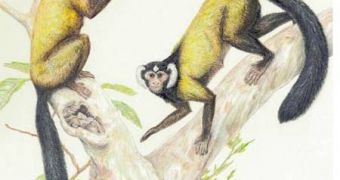According to new anthropological and archaeological studies, it may be that humans, apes and monkeys all originated from an Asian ancestor, rather than an African or a European one. The find comes shortly after the entire world was buzzing less than one month ago, as researchers presented Ida, the fossil that was “advertised” as the missing link between the early primates and the modern ones. Over the years, numerous shifts occurred between the areas that allegedly held the common ancestor, and our origins moved progressively from Africa to Asia to Europe, and then back to Asia, as older and older specimens were retrieved.
With Ida's discovery, anthropologists in Europe were excited that the origins of life as we know it were brought again on the Old Continent. But, in 2005, Paleontologist K. Christopher Beard, from the Carnegie Museum of Natural History, in Pittsburgh, Pennsylvania, while on expedition in the badlands of central Myanmar, made a find that changed that yet again. He found a 37-million-year-old jawbone fragment in the mud, which analysis revealed may have belonged to the last common ancestor between humans, apes and monkeys.
The most obvious sign on the relic was the extended canine, which paleontology experts said was used by the animal sporting it to carck open hard shells of fruits it fed off, to eat the juicy seeds inside. The way experts could tell that was by analyzing the signs of wear that appeared on the teeth, and by the fact that there were only few things that could damage the enamel coating on teeth in a specific manner, ScienceNow informs.
In a study published in the respected journal Proceedings of the Royal Society B., Beard and Jean-Jacques Jaeger, a paleontologist at the University of Poitiers, in France, have named the new fossil Ganlea megacanina, and said that the original animal was most likely an amphipithecid. However, not all experts are keen on embracing the new finds. Some say that, while the jawbone fragment is, indeed, further proof that anthropoids originated in Asia, it doesn't solve the scientific debate on the matter by a long shot.
They underline the fact that a new fossil could be found in an unexpected place at any time, bringing down this theory with it as well. In other words, most members of the scientific community want to take this extremely important and historical process step-by-step, so as to avoid any unnecessary arguments afterwards.

 14 DAY TRIAL //
14 DAY TRIAL //